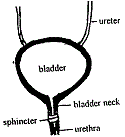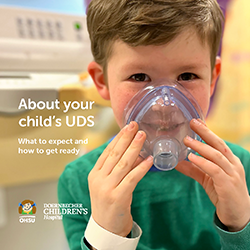Urodynamics Testing
We offer the only video urodynamics evaluation for children in the state of Oregon. Our staff can perform the most advanced type of bladder evaluation for children with severe bladder dysfunction. We incorporate pressure testing, EMG testing and flouroscopic evaluation to study the bladder and pelvic floor from all angles.
What to expect at Pediatric Urodynamics

Your doctor has asked that your child be given an appointment for urodynamic testing. These are special tests which show how each part of the bladder (which stores and expels urine), the bladder neck and sphincter (which holds the urine in) and the urethra (the urine channel to the outside of the body) function.
Urodynamic tests will be used to help decide what is causing your child’s symptoms. They will also be useful in deciding what kind of treatment may help the problem. Your child may need one or more tests depending on the problem.
Children needing these tests usually have symptoms suggesting one or more of these parts are not functioning correctly. Some of these symptoms are:
- Needing to urinate frequently or urgently
- Leaking urine
- Bedwetting (enuresis)
- Not emptying the bladder completely
- Neurogenic bladder

How do urodynamic tests work?
A catheter (a tiny tube passed through the urethra into the bladder), and a small rectal balloon are needed to do the tests. These may cause a small amount of discomfort, and you should explain this to your child prior to the test date. It is important that we have your child’s cooperation in order to get accurate test results. If your child is very anxious, we can provide some sedation if we know in advance. Only latex-free supplies are used during testing.
The provider will choose the appropriate urodynamic tests to answer questions such as:
- Does the bladder fill and empty normally?
- Does the bladder hold a normal amount of urine?
- Does the pressure in the bladder stay low when filled?
- Does the pressure in the bladder stay in the normal range when urinating?
- What happens in the bladder when leakage occurs?
- Does the bladder neck and sphincter work correctly when the bladder fills and empties?
- As the bladder is filled with fluid, does the child sense the filling appropriately?
Sometimes tests may need to be repeated at a later date to follow the progress of a problem.
Who will be there for the test?
Pediatric Urology provider(s) will attend and do your tests, assisted by a medical assistant who has been trained in Urodynamics as well as a radiology technician. During the entire test, an explanation will be provided about what is being done. Please feel free to ask any questions you may have.
What happens afterwards?
Urodynamics causes very little discomfort following the procedure. Some children may have a slight burning on urination, and sometimes there may be a small amount of blood in the urine. These usually go away on their own within a day. Your provider will discuss the results of your child’s tests with you, and suggest a plan for treatment or further studies if needed.
Where do I show up?
Check in at the Radiology check-in desk located on the 7th floor of Doernbecher Children’s Hospital. Look for the beaver sign above the desk.